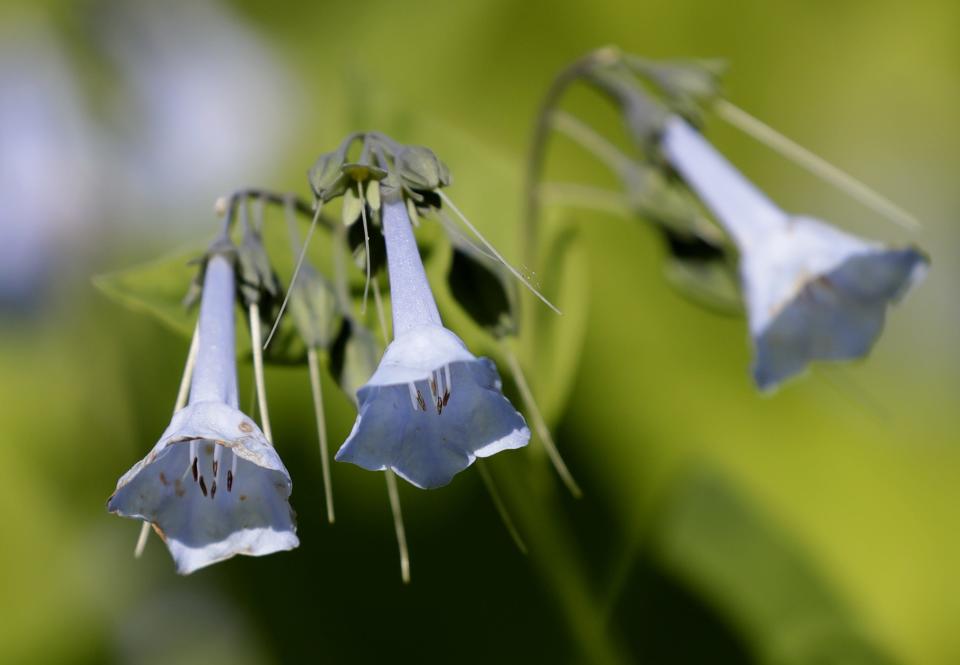Why some Fox Valley residents are ditching traditional lawns to plant native

When Mary Swifka and her husband moved to New London, they saw their lawn like an empty canvas.
Swifka moved to the area in 1989 from St. Paul, Minnesota, taking a job at the nearby Mosquito Hill Nature Center, where she worked as an environmental educator, sharing the knowledge and experience of nature with others.
But at home, Swifka created a slice of nature in her own yard. For nearly 30 years, the Swifkas have created a native landscape with a different palette from a typical, "golf course"-like lawn.
Without using chemical pesticides or fertilizers, Swifka said they've planted native trees and wildflowers, and let things grow naturally. Their hope was to create a unique space where natural biodiversity can flourish.
"Our lawn doesn't look like everyone else’s," Swifka said. "We don’t encourage the grass to grow. We let other things grow in our lawn."
RELATED: People are abuzz for Oshkosh's No Mow May proposal. Why experts say it helps biodiversity
Swifka is on the board of the Fox Valley chapter of Wild Ones, a national nonprofit based in Wisconsin that promotes environmentally friendly, sound landscaping to preserve biodiversity. In her role, Swifka helps educate others on how to create a native landscape instead of a traditional lawn.
Turf grasses — the typical grasses of most American lawns — make up a whopping 2% of all the land in the U.S., but according to Doug Tallamy, a professor of agriculture and natural resources at the University of Delaware, it's an "ecological wasteland."
Tallamy, who's an expert on the conservation of biodiversity, said a good landscape should be able to support a viable food web, support pollinators like bees and butterflies, help pull carbon out of the atmosphere and manage the watershed. Lawn doesn't do any of that.
Tallamy said, along with the current climate crisis, there's a crisis of biodiversity. A recent study suggests North America has lost 3 billion birds in about 50 years, and environmental groups are warning bees and other pollinators are dying at an "unsustainable rate."
While those headlines are a concern, he said, by building landscapes that are able to support birds and insects like bees or caterpillars, it can help make a huge difference to address the biodiversity issues.
"You can do something about it," Tallamy said. "You can do something right where you live."
One reason why people are planting more native plants are they support biodiversity better than nonnative plants, Tallamy said. Since the native plants are naturally a part of a local food web, they support important organisms better than plants that aren't already connected.
Swifka is happy with the results of her landscaping. With her backyard abuzz with birdsong and frogs croaking, she's happy her passion and hard work has seen results.
"(After) all this planting over the years, we’re starting to see other species reaping the benefit of our hard work," Swifka said.
Though Swifka acknowledged their nontraditional lawn might seem like a "fringe movement," there's more demand from people looking to plant native.

Patricia Kester helps run Kester Wild Game Food Nurseries in Omro. Though it initially started as a way to help hunters plant areas to attract wildfowl or deer, Kester said she helps educate and guide people looking to plant native.
"I have a lot of customers who just plant because they enjoy watching wildlife," Kester said. "It's increased in popularity."
Native grasses are also a big part of Kester's lawn, where she said she appreciates the fact they can help increase the habitat and space for birds.
"You provide a safe haven for them in a sense," Kester said.
Swifka may be caring for her lawn in a different way for most of her life, and she understands that most Americans have been taught her lawn is not the image of the "perfect" yard. Still, she hopes to soft-pedal the message of the importance of diversity and how planting native supports that.
"I'm not going to talk my neighbors into digging up their lawn," Swifka said. "But maybe they'll see the wildflowers in bloom or the birds from my yard move to theirs and make the connection that a healthy, native plant life can be the way to increase animal life."
Contact Bremen Keasey at 920-570-5614 or bkeasey@gannett.com. Follow him on Twitter at @Keasinho.
This article originally appeared on Oshkosh Northwestern: Why some Fox Valley residents ditch traditional lawns to plant native

